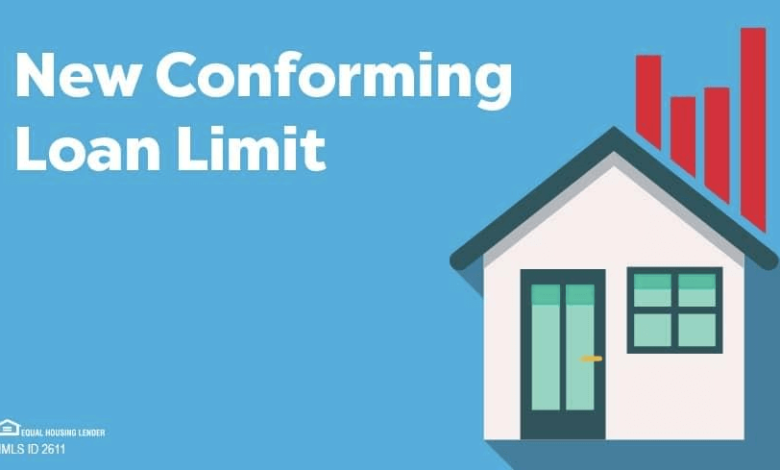What Is Conforming Loan Limit: Everything You Need to Know

In the world of mortgages and real estate, it’s crucial to understand the concept of conforming loan limits. These limits play a significant role in determining the eligibility and terms of a mortgage loan. Whether you’re a homebuyer or a real estate professional, this article will provide you with a comprehensive understanding of What is conforming loan limit and their implications.
1. Understanding Conforming Loans
1.1 Definition of Conforming Loans
These loans conform to the guidelines established by these entities, ensuring standardized terms and conditions.
1.2 Importance of Conforming Loan Limits
Conforming loan limits are crucial because they determine the maximum loan amount that can be considered conforming. These limits influence the availability of affordable financing options and affect borrowers’ ability to purchase homes within certain price ranges.
2. What is Conforming Loan Limit?
2.1 Definition of Conforming Loan Limits
What is Conforming loan limit are the maximum loan amounts that qualify as conforming loans based on the geographical location of the property. These limits are determined annually and vary by county or metropolitan area, reflecting the differences in housing markets across the United States.
2.2 Determining Factors for Conforming Loan Limits
The Federal Housing Finance Agency (FHFA) establishes the conforming loan limits by considering various factors, including the median home prices in different areas. The goal is to strike a balance between ensuring affordability for borrowers and managing the risks associated with mortgage lending.
3. The Role of Government-Sponsored Enterprises
3.1 Fannie Mae and Freddie Mac
They provide liquidity to the housing market by purchasing mortgages from lenders and then packaging them into mortgage-backed securities.
3.2 Conforming Loan Limits and Government-Sponsored Enterprises
Fannie Mae and Freddie Mac adhere to the conforming loan limits when purchasing mortgages from lenders. By doing so, they help maintain stability in the housing market and ensure a steady flow of affordable mortgage financing.
4. How Conforming Loan Limits Impact Borrowers
4.1 Benefits of Conforming Loan Limits
Conforming loan limits offer several benefits to borrowers. Firstly, conforming loans typically come with lower interest rates compared to non-conforming loans. Additionally, these loans often require smaller down payments and have more flexible qualification criteria, making homeownership more accessible to a broader range of borrowers.
4.2 Limitations of Conforming Loan Limits
On the other hand, conforming loan limits may restrict borrowers who wish to purchase homes in high-cost areas or those looking for larger loan amounts. In such cases, borrowers may need to consider non-conforming or jumbo loans, which have different requirements and higher interest rates.
5. The Difference Between Conforming and Non-Conforming Loans
5.1 Definition of Non-Conforming Loans
Non-conforming loans, also known as jumbo loans, exceed the conforming loan limits established by government-sponsored enterprises. These loans are typically used for higher-priced properties or in areas with expensive real estate markets.
5.2 Contrasting Conforming and Non-Conforming Loans
The primary differences between conforming and non-conforming loans lie in the loan amounts and eligibility requirements. While conforming loans adhere to specific guidelines, non-conforming loans offer greater flexibility but often come with higher interest rates and stricter qualification criteria.
6. Factors Affecting Conforming Loan Limits
6.1 Economic Conditions and Housing Market Trends
Conforming loan limits are influenced by economic conditions and housing market trends. When home prices rise, conforming loan limits are adjusted to accommodate the increased costs, enabling borrowers to secure loans that align with the prevailing market conditions.
6.2 Geographic Location and Property Type
Conforming loan limits can vary significantly based on the geographical location and property type. High-cost areas with expensive real estate markets typically have higher conforming loan limits, allowing borrowers in those areas to access larger loan amounts.
7. Jumbo Loans and High-Cost Areas
7.1 Introduction to Jumbo Loans
Jumbo loans are non-conforming loans that exceed the conforming loan limits. These loans are designed for borrowers who need to finance properties with higher values. Jumbo loans often have stricter requirements and higher interest rates due to the increased risk associated with larger loan amounts.
7.2 High-Cost Areas and Jumbo Loan Limits
High-cost areas, such as major metropolitan regions, often have higher jumbo loan limits to accommodate the higher property values. Borrowers in these areas may need to consider jumbo loans to finance their homes adequately.
8. Recent Changes in Conforming Loan Limits
8.1 Updates in Conforming Loan Limits
Conforming loan limits are periodically reviewed and adjusted to reflect changes in the housing market. These adjustments help ensure that borrowers have access to affordable financing options that align with the current economic landscape.
8.2 Impact on Homebuyers and Lenders
Changes in conforming loan limits can impact both homebuyers and lenders. Homebuyers may benefit from increased loan limits, allowing them to purchase properties that were previously outside their financial reach. Lenders, on the other hand, must stay updated on the latest conforming loan limits to provide accurate information and guidance to borrowers. Read more…
9. Conclusion
Understanding what is conforming loan limits is essential for anyone involved in the real estate and mortgage industries. These limits play a significant role in determining the availability of affordable financing options for borrowers. By adhering to the conforming loan limits, borrowers can benefit from lower interest rates, easier approval processes, and more favorable loan terms.
Frequently Asked Questions (FAQs)
- What happens if I need a loan amount that exceeds the conforming loan limit?
- Are conforming loan limits the same in every state?
- How often do conforming loan limits change?
- Can I get a jumbo loan if I don’t meet the requirements for a conforming loan?
- Do conforming loan limits apply to refinancing as well?
